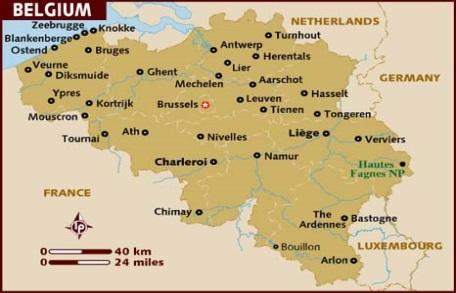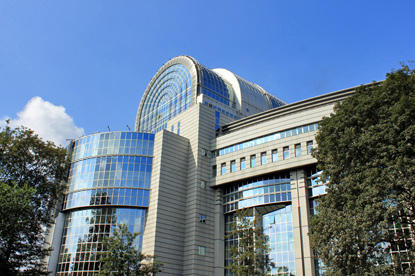Spatial planning is one of the issues that are of great concern to policy-makers in Belgium. Currently, this country is strongly affected by such trends as increasing population, the growing necessity to protect cultural heritage, and transformation of former industrial zones (Gropas 2014). Therefore, it is vital for local communities to adjust to these factors and become more sustainable in the long-term. Moreover, Belgium is influenced by the regulations adopted in the EU, and the government of the country has to comply with the norms adopted at the international level. It should be noted that the country consists of 589 municipalities located in different regions, namely, Wallonia, Brussels Capital Region, and Flanders (Tosics 2010, p. 72).

Each of these municipalities strives to maintain some degree of independence. There are different organisations that are responsible for spatial planning in this country. These agencies form a very complex hierarchy that includes several levels. For instance, one can speak about the federal government. It is mostly responsible for the management various issues that are related to the environment. For instance, it is possible to mention the protection against radiation or the transit of waste (European Comission. 2000, p. 62). Nevertheless, the role of national and federal institutions is rather small, and local authorities have many opportunities for decision-making. To some degree, this situation can be explained by the fact that the political system of Belgium became less centralized during the last three decades (Ferragina 2012, p. 167). This detail is important for understanding the peculiarities of spatial planning in this country and its economic development.
In turn, more attention should be paid to the role played by regional government. This institution has to cope with a variety of tasks, for instance, it can issue permits for building infrastructural projects. Additionally, these organizations can approve local regulations that can be related to local landscape, infrastructural projects, and environment protection. Among its competencies, one can also distinguish the development of sub-regional and regional development plans (European Comission 2000, p. 63). It is also critical to discuss the regionals councils since these organisations are entitled to adopt laws that can influence practically every aspect of spatial planning (Larsson 2006, p. 111). So, these agencies shape the long-term policies regarding spatial planning. Moreover, their decisions have profound implications for the economic and social life of the country. This is one the points that can be made.
Additionally, it is critical to discuss the role played by provincial governments. They incorporate the so-called provincial planning departments. One of its major duties is to review building permit appeals and determine whether they can be accepted (European Comission, 2000, p. 65; Halkier, 2002, p. 168). Finally, it is necessary to speak about municipal governments that also have the authority to take part in spatial planning. Nevertheless, they do not have the authority to shape the existing regulations. Thus, they cannot act as policy-makers and legislators. This is one of the differences that should be taken into account.
One should not overlook that local agencies should comply with the standards that each country of the EU accepted. In particular, it is critical to focus on the protection of the environment since it is one of the issues that European planners lay stress on (Williams 1995, p. 186; Reimer, 2014). Such an organisation as the European Environment Bureau has the authority influence the work of Belgian planners (Williams 1995, p. 186). Therefore, one should not forget about the role of international institutions because they also affect the decisions of legislators and planners.
There are several important themes in Belgian spatial and regional planning. Among such issues, one can certainly distinguish the attempts to increase the environmental sustainability of the country. For example, in many regions of the country, local policy-makers lay stress on wind and solar power since this approach can help a country decrease its dependence on fossil fuels (Busby 2012, p. 282). Overall, this approach is critical for the economic and environmental sustainability of the country. To some degree, this issue is of great importance to other member-states of the EU (Seaton, 2001). In turn, Belgium is one of the EU countries that significantly increased its energy efficiency during the last twenty years.
Currently, regional governments pay close attention to large urban projects. This trend is particularly relevant to Brussels which homes many European institutions. For example, it is possible to speak about the European Quarter which is a prominent center of the global politics (Romanczyk, 2012, p. 129). This area of the city differs considerably those districts that were not influenced by architectural innovations.

This particular example is interesting because it shows how local and international organizations can interact with one another. Overall, the unique geopolitical position of Brussels is one of the reasons why this city is regarded as a separate region within Belgium (Romanczyk, 2012). Moreover, this example throws light on some of the major concerns that Belgian planners consider. In particular, they focus on the need to reconcile modernist architecture with numerous cultural sites that Belgian cities are famous for. This task is critical for promoting tourist industry which is an important part of many regional economies. This is one the major challenges that they now struggle with.
There are other questions that are critical for many regional, provincial, and municipal organizations. For instance, these organizations attempt to make sure that people have access to transportation, broadband Internet, and energy networks. This emphasis is important for raising the standards of living and enhancing economic activities (Sykes 2010). This task is particularly important at the time, when the population of the country grows. Moreover, they struggle to transform former industrial zones of the country, especially those one, which are located in the Walloon region (Tellier 2009, p. 234). These areas should be adjusted to the changing economic environment of the country (Tellier 2009, p. 234). These are some of the main issues that should not be disregarded.
On the whole, Belgium can be regarded as country in which spatial planning is effectively implemented by regional and municipal organisations. Moreover, the decentralisation has significantly contributed to the improvement of living conditions in the country. At present, this country attempts to address to modernize the infrastructure of the country while retain its distinct cultural image. Moreover, the emphasis on sustainability and energy efficiency are critical for planners who may work at different levels. This strategies adopted in this country can be used in different contexts. These are the main details that one should consider while examining the peculiarities of spatial planning in this country.
References
Busby, R 2012, Wind Power: The Industry Grows Up, PennWell Books, New York. Web.
European Comission 2000, The EU compendium of spatial planning systems and policies: Belgium. Web.
Europedia 2014, Attractions in the European Neighbourhood. Web.
Ferragina, E 2012, Social Capital in Europe: A Comparative Regional Analysis, Edward Elgar Publishing, New York. Web.
Gropas, R 2014, European Immigration: A Sourcebook, Ashgate Publishing, London. Web.
Halkier, H 2002, Regional Development Agencies in Europe, Psychology Press, London. Web.
Larsson, G 2006, Spatial Planning Systems in Western Europe: An Overview, IOS Press, London. Web.
Lonely Planet 2014, Map of Belgium. Web.
Reimer, M 2014 Spatial Planning Systems and Practices in Europe: A Comparative Perspective on Continuity and Changes, Routledge, London. Web.
Romanczyk, K 2012, ‘Transforming Brussels into an international city – Reflections on ‘Brusselization’, Cities, vol. 29, no. 10, pp. 126-132. Web.
Seaton, K 2001, Subsidiarity and Proportionality in Spatial Planning Activities in the European Union: Supplementary volume, University of the West of England, Bristol. Web.
Sykes, O 2010 ‘Territorial Cohesion Policy – into the 2010s’, Town and Country Planning, vol. 24, no. 20, pp.101-103. Web.
Tellier, L 2009, Urban World History: An Economic and Geographical Perspective, PUQ, London. Web.
Tosics, I 2010, National spatial planning policies and governance typology. Web.
Williams, R 1995, European Union: Spatial Policy and Planning, Paul Chapman Publishing, London.Web.